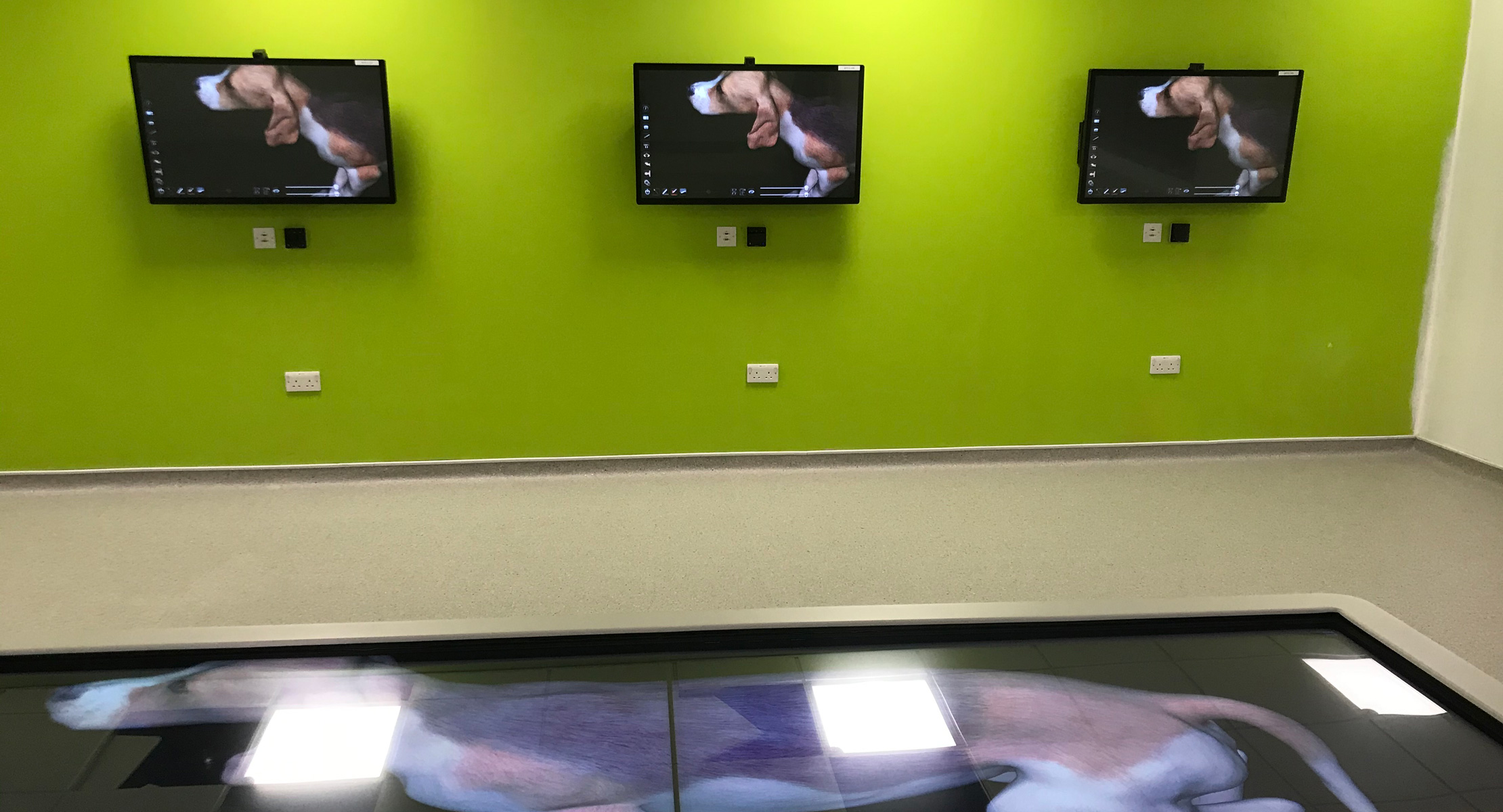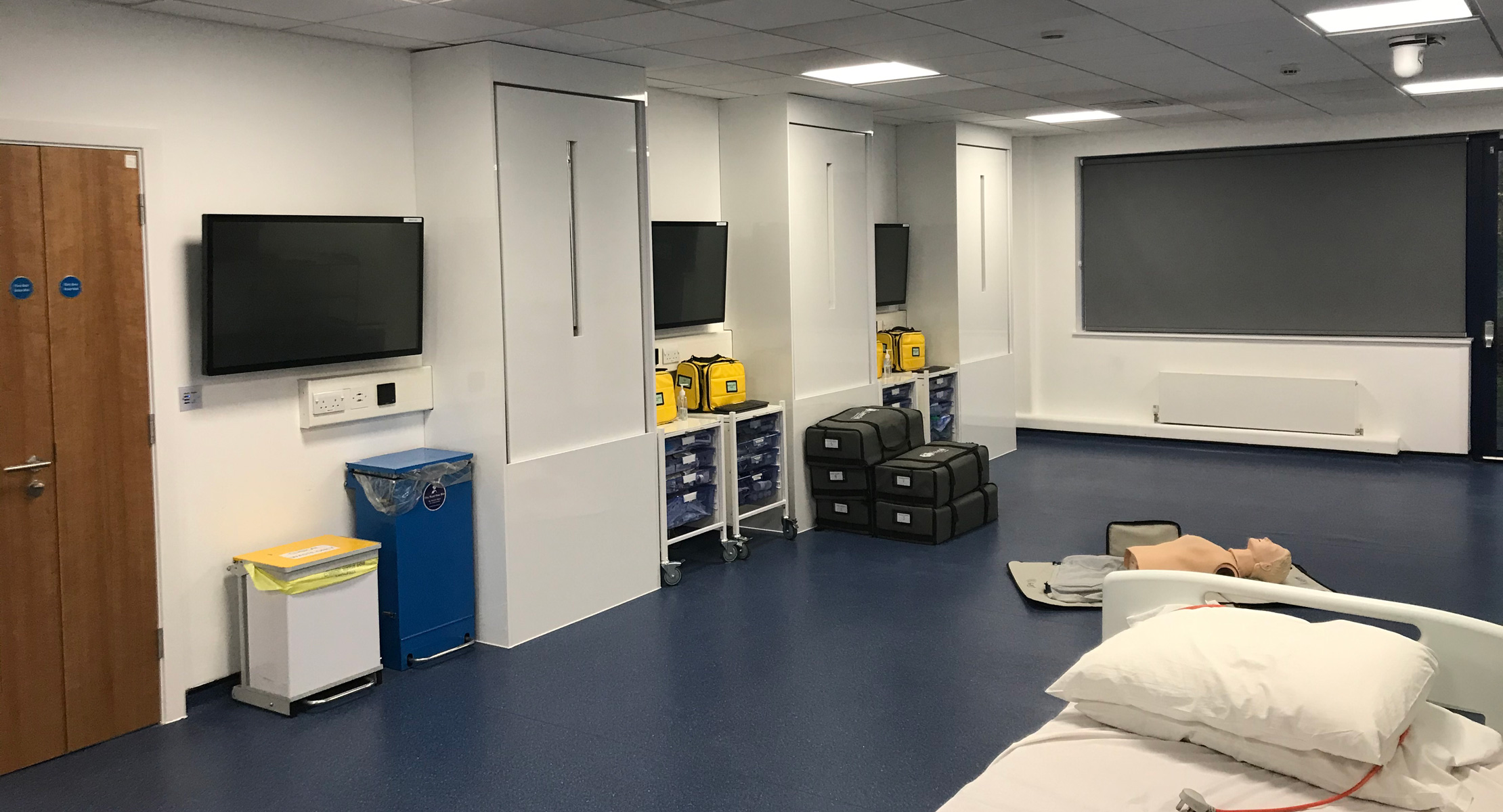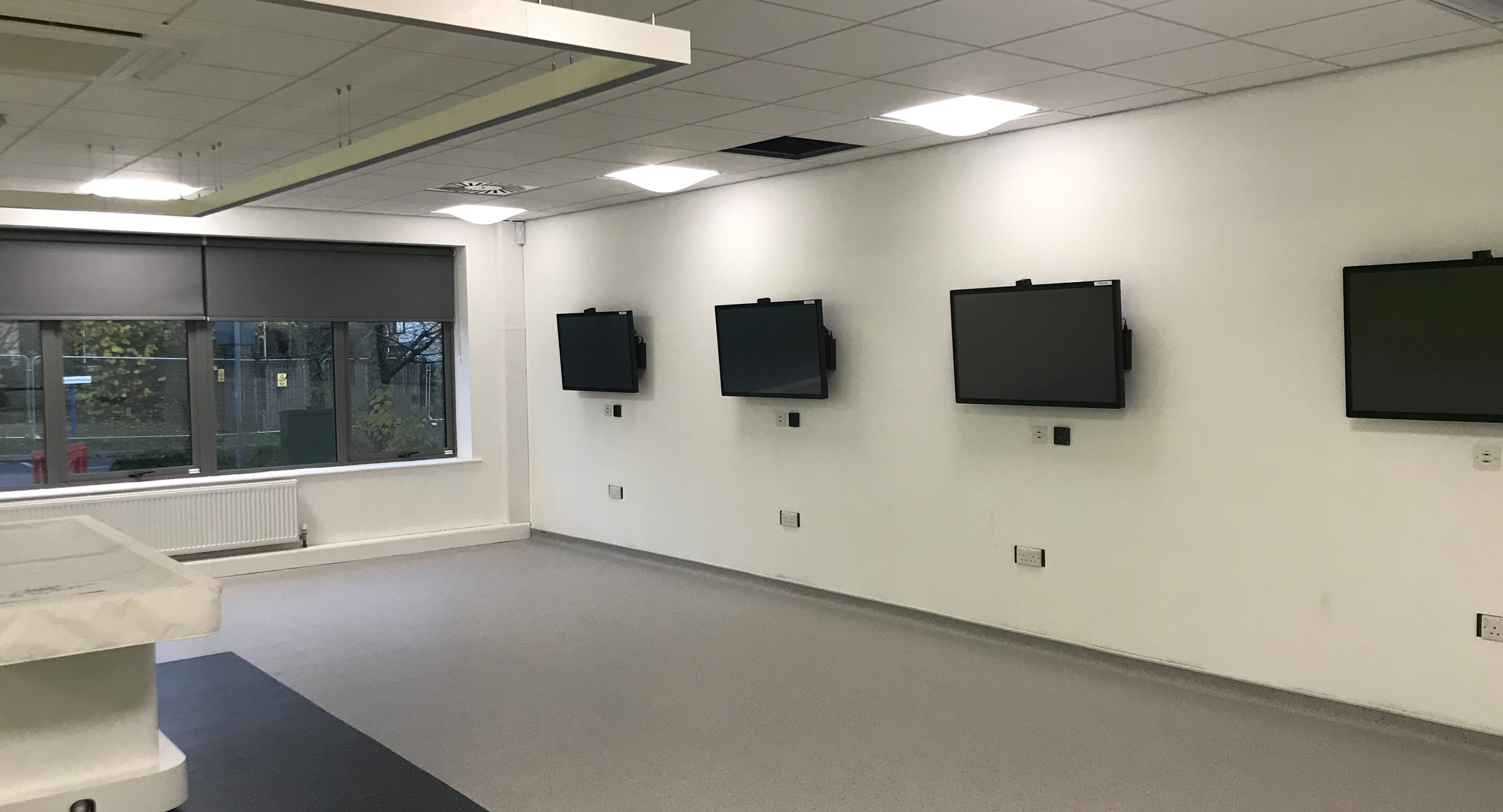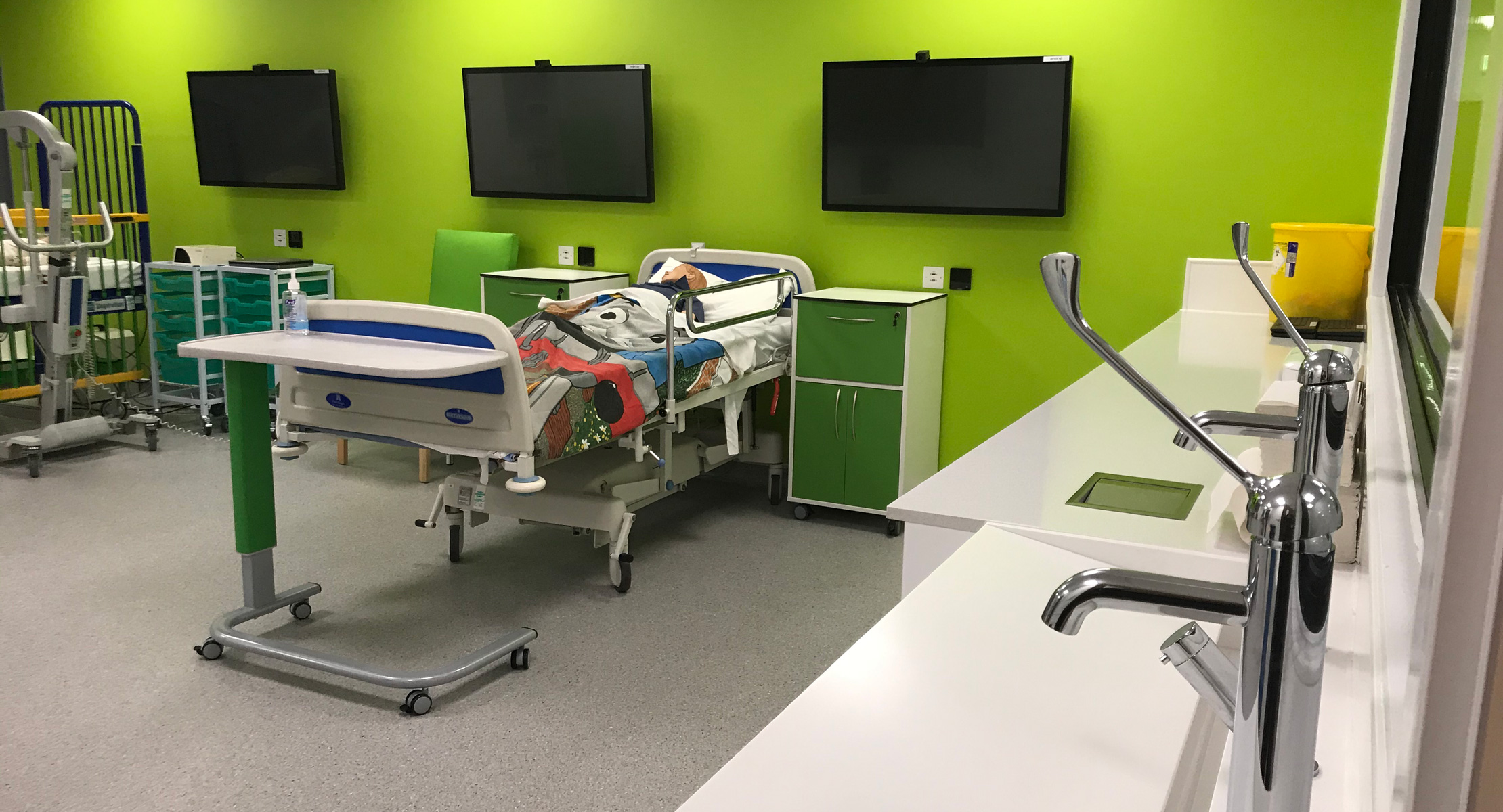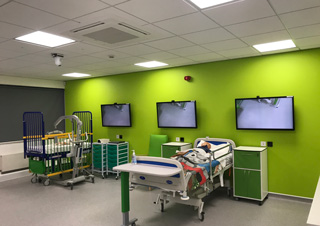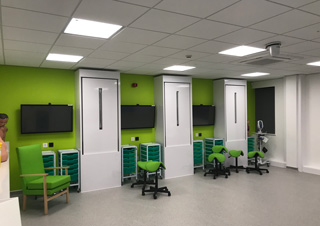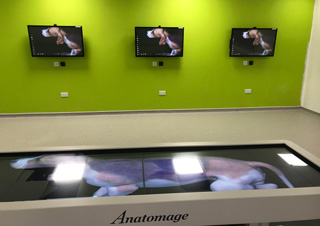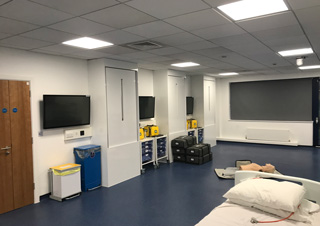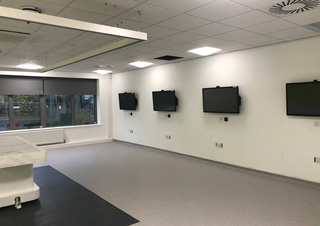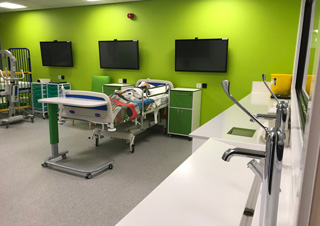Following a strong tender submission, GV’s Coventry team was commissioned for the project and engaged at an early stage to work with the end users to both develop the scope and workshop ideas. Involving careful consideration of the variety of needs for each of the specific users, this enabled the team to understand the complexity of the task in hand and develop a system and workflow to allow for all requirements to be met within the calculated package budget.
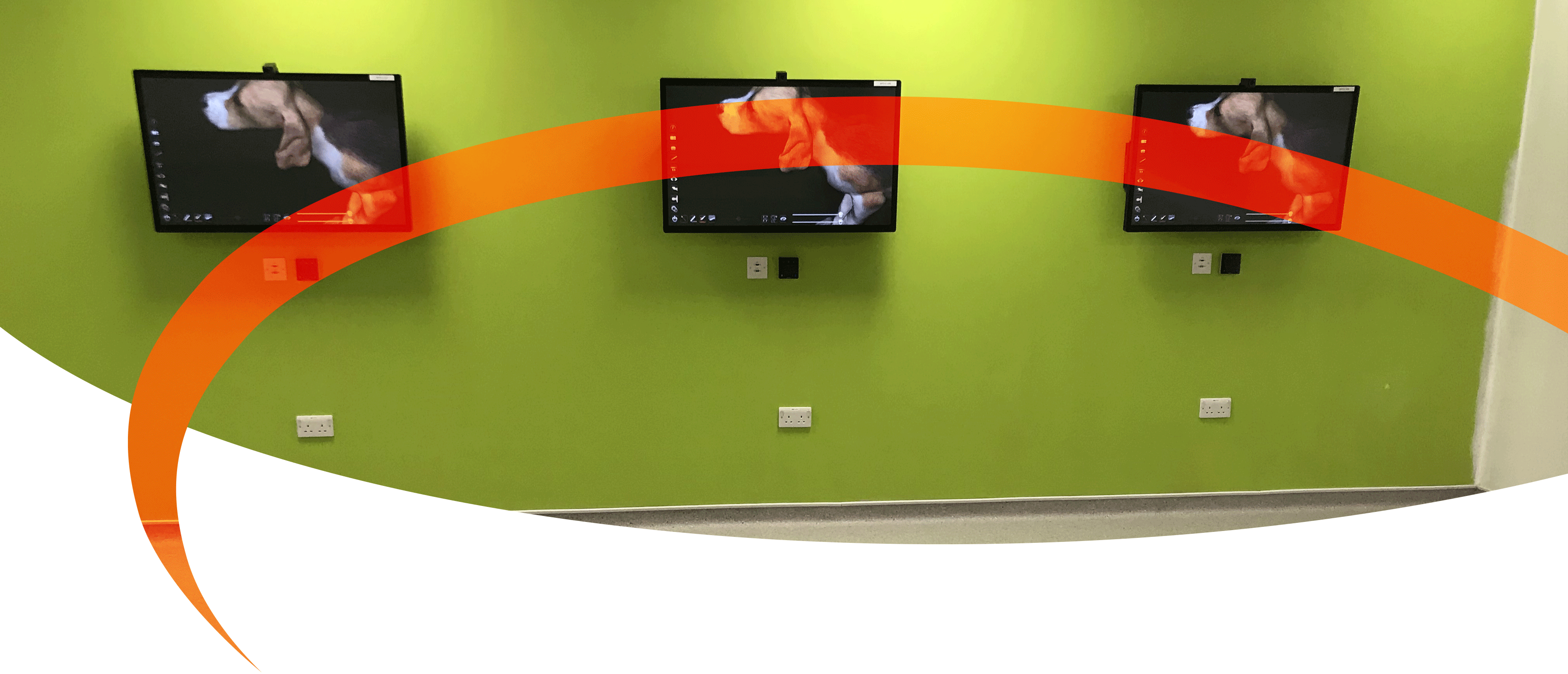
University of Wolverhampton -
Sister Dora Building
AV INSTALLED
TOP-TEC Synergy
Mersive Solstice
Crestron DM-NVX
When the University of Wolverhampton looked to develop new state-of-the-art health lab facilities at their Walsall Campus. Home to part of the University’s Institute of Health, the Sister Dora Building’s facilities were reviewed and remodelled, to vastly improve the capabilities of their existing clinical skills labs. The new development consisted of a two-storey extension, creating new simulation labs and teaching rooms to facilitate the requirements of students on medical courses including paramedic science, midwifery, and nursing.
When it came to the AV requirements, the project would involve adding embedded teaching stations and active monitoring/assessment areas within each of the various skills labs (both existing and new). This included the development of comprehensive system integration into
four new teaching spaces on the first floor, while the ground floor featured three new labs (one of which including an Anatomage table), and a mockup of a residential flat. The project also required three
TOP-TEC Synergy desk breakout areas for collaboration and group
works throughout the building.
The works were to be approached in two phases, with the first involving the refurbishment of the existing labs. As the new extension to the building was constructed, the second phase would commence with system integration into the new labs, the mock flat and teaching
rooms.
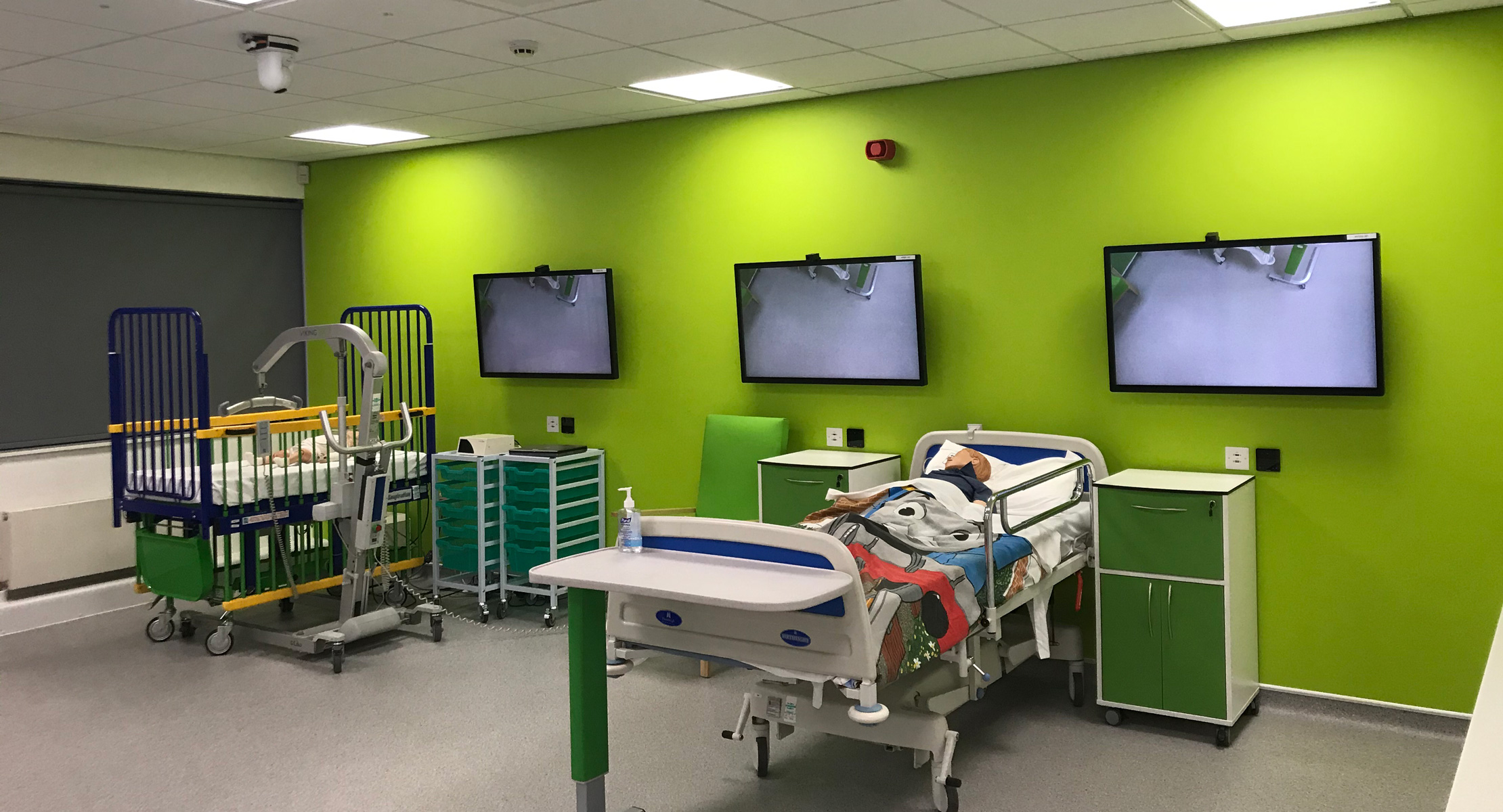
Clinical Skills Labs
The project necessitated the provision of systems in each lab that consisted of a PTZ camera
and microphone that can be routed to any of the 43” touch screens mounted by the bed
heads, as well as to a large format display for the entire room. Content needed to be captured
by Panopto PCs situated in the Technicians’ Office. Requirements of all displays within the labs included the ability to plug in a local HDMI source as well featuring formfactor PCs mounted to the rear of each unit.
In each space, a touch controller was situated adjacent to the connection plate, with some labs
having overall control panels by the entrance door. One of the labs was fitted with an incredible
Anatomage Virtual Dissection Table. In thie space, the user can select and send images to the
other screens in the room.

Mock Flat
Developed to simulate real life situations for paramedics, the mock flat needed to have every
room enabled with a PTZ camera and microphone for remote viewing and recording.
It also needed large format displays in the living room and bedroom, to present content from any of the cameras. The living room also included a control panel to manage the screens and cameras throughout the mock flat.
All systems in these areas were to be viewed, monitored, controlled, and recorded from the
Technicians’ Office for central support, ease and best space planning.
To have the best AV value and function to meet the University’s needs in the spaces available, GV’s technical team really had to think outside the box. In accommodating flexibility and an “everything everywhere” philosophy, the team chose to utilise the power of AV over IP (AVoIP) as a core feature of the proposed system. This provided the building with a dedicated AV infrastructure to facilitate future development and an overall guarantee of component
compatibility.
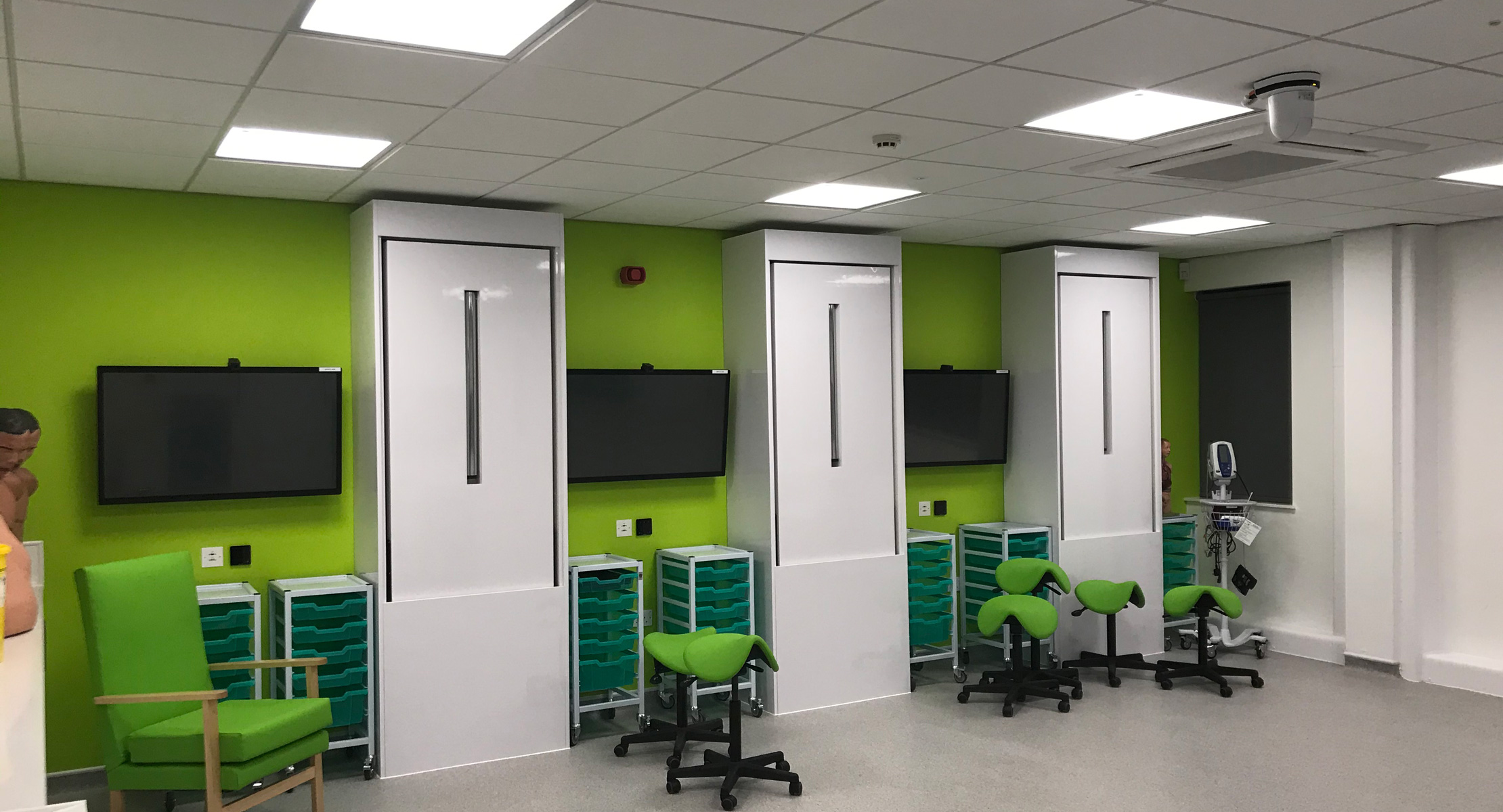
A dedicated AV infrastructure.
To manage and operate the AVoIP and control system components, we supplied a pair of
layer-3 network switches (Cisco SGX-350) as the backbone to the system. These provided the
requisite bandwidth to run the entire system at 4K resolution with extremely low latency. This
also had the added benefit of providing the PoE for the control surfaces.
By using the Crestron CP3N control system, the team was able to physically separate the AV
LAN from the house LAN, therefore giving the University a single point of connection to the
system, mitigating any issues we would have encountered by trying to use the existing core
network switches. Despite the majority of the devices siting on the AVoIP network, some
devices needed to be placed on the house LAN for capture reasons – including the 360° and
dome cameras.

Synergy.
For the three Synergy desks (TOP-TEC) GV provided local HDMI and BYOD (Mersive Solstice
Pod) inputs to be used locally at each desk. Each had the added feature of a decoder so that
the technician could send video and audio from any of the main cameras to these breakout
areas for external monitoring and teaching. This provided the option to move students out of
the lab and remotely view any procedure that is carried out in detail without crowding the
nominated training area.
User acceptance.
Upon completion of the installation, the described system was handed over to the client and training given to the key operatives. The system was well incredibly well-received and is now in heavy use, training future nurses, midwives and paramedics in their respective roles. GV has given the university a true asset with a sleek, stealthy powerful system that can and will grow with the expansion of the teaching facility - all thanks to the core AVoIP system that can be added to with ease, avoiding costly modifications.
Although not part of the original scope, the ability to send any camera or presentation screen’s feed to any display in the facility has been proven to be a real asset. This has made the most of any teaching or training taking place as students no longer need to huddle around one or two screens to see what is going on - they can be in any room.
Sister Dora has shown the power of its design and is now being replicated in other areas of the University and beyond. It marks a hugely successful project for the Coventry team and for GV overall.
